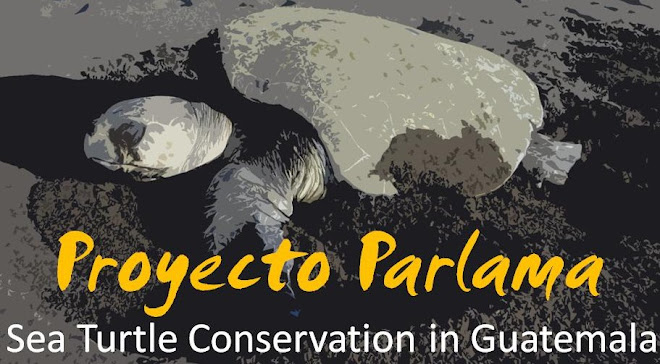
Photo by Scott Handy
The leatherback sea turtle (Dermochelys coriacea) can be easily distinguished from other sea turtles as it does not have a carapace consisting of scutes. It has a thick, rubbery carapace with seven keels running longitudinally. It has a worldwide distribution and under takes huge migrations for nesting and foraging. On the IUCN Red List, the Leatherback is listed as "critically endangered" (see IUCN web site).
Between November and January, a handfull of Leatherbacks return to the Pacific beaches in Guatemala to lay their eggs. It is thought that over the last 10 years or so, the eastern Pacific population of leatherbacks has declined almost 90% (IUCN).
This rapid decline can be attributed to anthropogenic stresses such as egg poaching and mortality in long-line fisheries, and their life history (few hatchlings will reach sexual maturity and sexual maturity is not reached until around 13-14 years).
Only towards the end of 2006 were regulations tightened on the trade and consumption of leatherback turtle eggs in Guatemala. A new national law in the Diario de Centro America numero 28, 5/10/2006, of Consejo Nacional de Areas Protegidas (CONAP) del gobierno de Guatemala prohibits the collection and exploitation of leatherback eggs between the 15th October 2006 until the 15th April 2007. Perpetrators face fines of up to 2.7 thousand US dollars and 5 to 10 years imprisonment (CONAP, 2007).

Sketch by Rachel

No comments:
Post a Comment